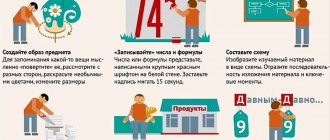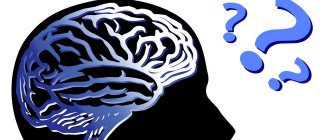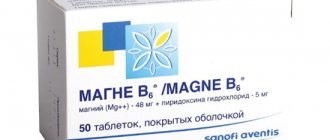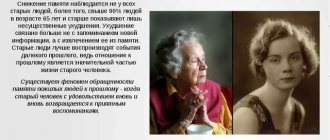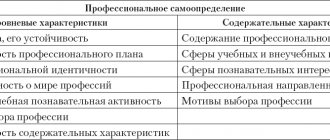Parents often wonder why their child has difficulty learning the rhyme assigned for the holiday, but remembers his favorite songs or poems easily and can repeat them endlessly? What does memory ability depend on? And, most importantly, is it possible to develop a child’s memory?
The development of memory consists in qualitative changes in memory processes and in the transformation of the content of recorded material. This is very important for children, both in everyday life and in school. It is not without reason that when assessing a child’s intellectual readiness for school, one of the most important criteria is his developed memory. After all, this is a prerequisite for successful and versatile knowledge of the world, assimilation of new information. The more attention parents pay to the development of various types of memory, attention and imagination of the baby, the higher the intellectual potential of their child. That is why all the most effective methods of early intellectual development necessarily include exercises and games for the development of all types of memory.
What is memory?
This is a reflection of past experience. It is based on three processes - remembering, storing and reproducing.
Memorization is the process of formation and consolidation of information in the nerve cells of the cerebral cortex in the form of nerve impulses transmitted along the processes of these cells to each other. As a result of this, new neuro-reflex connections are established - ways of receiving and extracting information. In addition, when memorizing, a connection is established between new and existing paths. The connection between individual events, facts, objects or phenomena reflected in our consciousness and fixed in our memory is called association. Without associations, normal human mental activity, including memorization, is impossible.
Incoming information is stored in our memory in the form of a memory trace - an engram. Probably all brain cells take part in its formation and preservation. But science does not yet know exactly in what form this memorable trace is stored. The formed engram is very stable and can be preserved throughout a person’s life, but its extraction, that is, remembering something, can be fraught with great difficulties. However, it has been proven that with learning and memory training, the number of connections between nerve cells becomes more and more, they become stable, which leads to easier retrieval of the engram. Exercises and training on memory development are aimed at solving this problem. The process of storing information in memory consists of two important aspects - the preservation of a memory trace and connections in the brain. Thanks to memorization and preservation, it becomes possible to reproduce information, as well as its recognition (remembering).
Reproduction is the process of the appearance in consciousness of previously perceived information, the execution of memorized movements. During reproduction, images fixed in memory “come to life” quickly without auxiliary, supporting information. So, for example, when a person is explained how to get somewhere, then in addition to the street name and house number, they are given various additional information that there will be a store, a school, or a traffic light on the way. The next time he goes to the same address, no auxiliary information is required to find the desired object, and recall occurs faster. This is called a good memory. But in order to achieve literally automatic reproduction of the necessary information, it is necessary to repeat it several times.
The types of manifestations of memory are extremely diverse. The type classification of memory is based on three main criteria (features):
1.Memorization object
Depending on what exactly a person perceives and reproduces, there are four main types of memory: visual-figurative, which promotes good memorization of faces, sounds, colors, shapes of objects, and so on; verbal-logical (or verbal-semantic), in which information is memorized by ear; motor (motor) - memory of movements and emotional memory, in which experienced feelings, emotions and events are remembered.
2. The degree of volitional regulation of memory
On this basis, memory is divided into voluntary (which is used if you need to remember something and the process itself requires effort from a person) and involuntary (the task of memorizing is not set, it happens by itself)
3. Duration of storing information in memory
According to this criterion, memory is divided into short-term and long-term.
Development through exercise
The best way to develop a child's memory is through exercise. They allow you to achieve good results that will be noticeable both to the baby himself and to everyone around him.
Exercises have a positive effect on memory, logic, attention and general level of intelligence
The following exercises are most effective:
- Sketching words. The parent needs to say the words out loud, and the child’s task is to quickly sketch them on a piece of paper. At first you need to name simple things (a chair, a car, a house), but later you should increase the complexity (old age, flying, etc.) to make it harder to paint a clear picture. Additionally, you can add adjectives to words.
- Drawing from memory. The adult shows the picture for 30 seconds, after which the child must draw it from memory. Gradually the image should become more complex.
- Memorizing words. Show the child a piece of paper with a set of words, give him 30 seconds to memorize, and then give him a blank sheet, where he must write the same words from memory. You can make the task more difficult by asking them to maintain the order of the words.
- Calculations. The parent gives the child a picture where he must count the number of certain objects. You should gradually increase the complexity of the images to make it more difficult to find the necessary elements.
- Description. You need to name the object, and the child must describe it in as much detail as possible. You should choose only those things that are well known to him. To complicate the task, it is recommended to ask additional questions.
- Comparing lists with words. The parent should give the child a list of 10 words for one minute. After this, instead of the first list, you should give a second list, where there will be the same number of words, but 7 of them must be new. The task is to find those words that were already present in the first list.
- Retelling. The parent reads a short story, after which the child must retell it as correctly as possible. It is allowed to replace reading by an adult with an audiobook or independent reading by a child. In the first two cases, hearing and the corresponding type of memory will be involved.
These exercises for developing memory in children will help you achieve results after just a few workouts.
However, it is important to consider that excessive stress on the brain will lead to negative results. Therefore, you should give your child time to relax and have fun.
What does memory ability depend on?
There are several factors at play here. First of all, age - the older the child, the better his memory works. This direct dependence is associated not so much with the direct development of memory, but with the improvement of the technique of its use. The baby remembers the proposed material without making any effort, based on his natural ability. Older children and adults resort to certain techniques to remember - they connect new information with previous experience, forming associations, prepare notes, etc. In other words, they more actively turn on the mechanism of the so-called mediated memory.
In addition to age, the accumulated knowledge base is important - memory develops with an increase in the amount of knowledge.
The development of memory is also influenced by the level of mental abilities - the more the baby can do, the more actively he thinks about something, the more he is able to remember. As a child grows, his mental abilities develop, and memory develops along with them.
Recommended games and exercises
There are several particularly effective but simple exercises.
"What's wrong?"
5-6 objects are laid out on the table in front of the baby, and he is given time to memorize them. After this, the baby must turn away from the table, and the presenter at this time swaps a couple of toys or removes 1-2. The child’s task in the game is to restore the correct sequence or talk about what disappeared from the table. The exact same game can be played with object pictures.
"Remember what happened"
The exercise does a great job of training long-term memory. Ask your child to remember and talk about what happened yesterday. Let him try to tell you everything in as much detail as possible.
Game "Names"
You can play this game when you are in line, on the way to the store, at any time - if you need to keep your child occupied with something so that he behaves quietly. Ask him to name 5 boys' names, then 5 girls' names, then the game continues in the same order. At first, the baby will name the names of the people closest to him, then friends and acquaintances, but after that he will begin to remember the names that he has ever heard.
Tongue Twisters
Learning them helps not only develop a preschooler’s speech, but also trains memory
Please note that this should be “by the way” - in the game, during free minutes. You can invite your child to have a competition to see who can complete the task better.
In this case, the winner must receive praise or some minor prize. Ask your little one to repeat the tongue twister after you, and the next day let him remember it.
Game "Words"
There are two game options.
- Let your child tell you a letter of the alphabet. Now start naming words starting with this letter one by one.
- Ask your child to name a word. Then you need to name a word that begins with the last letter of the previous one. The game is very similar to the well-known game “Cities”.
"The Road to Home"
When, while walking with your baby, you have gone far enough from your home, you can offer him this exercise - let him show you the way home. Naturally, you strictly control this process
During the journey, pay your child’s attention to little things that can be very useful when finding the road: store signs, unusual trees, noticeable houses. Then next time he will try to do everything on his own
Herbarium
Going outside with your baby, you can collect different leaves and flowers, while pronouncing the name of each plant. At home, put these leaves in an album and dry them. After a while, you can look at them and ask your child to remember what these plants were called. You can use them in crafts later.
"Name a couple"
This exercise helps in training associative (semantic) memory. Tell your child pairs of words that are related in meaning: heat and summer, soup and lunch. Start with 5-6 pairs. Speak them clearly. Then ask the baby to repeat the second word in the pair, telling him the first. Gradually, the task can be complicated by offering more pairs.
"Repeat after me"
Tell your preschooler 10 words that are not related in meaning. Now let him try to remember the words you said. This exercise is great for training auditory memory.
Retellings
Teach your child to retell a work he read, a cartoon he watched, or a story he heard. Before going to bed, ask to tell you about the interesting events of today. This exercise is a good workout for memory development.
"Remember and Draw"
Give your child 1 minute to look at the picture. He must try to remember it. After this, the picture is closed, and the child is asked to draw it, reproducing all the details as accurately as possible.
Features of a preschooler's memory
Preschool age is characterized by intensive development of the ability to remember and reproduce. The memory of preschoolers is mainly involuntary. Children do not yet know how to set themselves the task of remembering and do not accept such a task from adults. The material that is included in the active activity is involuntarily imprinted. Memorization and recollection occur independently of the child’s will and consciousness and depend on the nature of his activity. That is why new knowledge should have some meaning for the baby - the more this information comes into contact with his interests, the easier he will remember it.
The child does not invent methods of memorization and recollection himself; they are organized by an adult. The amount of memory will depend on the state of visual and auditory perception and attention. Therefore, from an early age it is necessary to develop these abilities and speech in children in order to promote the development of all types of memory.
During the preschool period, memory develops very intensively, as children begin to ask many questions and receive a huge amount of information. During this period, the speed of development is faster than other abilities. This explains the ease with which 3-6 year old children remember poems, fairy tales, counting rhymes, riddles, as well as everything unusual and colorful.
Elements of voluntary memory appear in a child towards the end of preschool childhood in situations where the child sets himself the task of remembering and remembering. This desire should be encouraged in every possible way, the baby should be taught to memorize with the help of games and exercises, and control over the correct assimilation of information.
Simple exercises that you can do at a time convenient for you
Exercise one
Take any word and read it backwards.
For example: a goat, a wolf, an orange, a rake, a rhinoceros, a car, a tower, a power plant, a high-rise building, and so on. Each time take new words and more complex ones.
Now come up with words and read them backwards without writing them down on paper.
This exercise can be done anywhere, even on the way to the store or to work.
Exercise two
Count quickly from one to thirty and back. If you manage to count without hesitation, then count from one to forty and back, and so on.
This exercise can be done anywhere, even on the way to the store or to work.
Exercise three
You need to quickly name thirty female names so as not to lose track of how many names you have named, you can write them down on paper, the names should not be repeated.
Now quickly name thirty male names, so as not to lose track of how many names you have named, you can also write them down on paper; the names should not be repeated.
Exercise four
You need to come up with thirty words for each consonant and vowel letter; if it’s difficult for you the first time, then start with ten words.
For example:
Pineapple, airport, arena, albatross, agate, appetite, orange, article, applique and so on.
Exercise five
You can play with words, you come up with a word and at the end of this word you need to come up with a second word, then at the end of the second word you come up with a third word and so on.
All words must be nouns. This exercise can be played by two or three and will be very interesting and useful.
For example:
Sky - ocean - knife - toad - orange - hole - and so on.
Board games, such as checkers, chess, and dominoes, are very beneficial for memory development. You can play these games at home or at work during your lunch break.
Solve crosswords, puzzles, riddles, learn poetry, use different information every minute.
If you have a desire, study foreign languages - this is also good development for the brain and memory.
You can also do mathematics, add different numbers, you can count purchases in a store or lunch in the canteen.
And then you will see what your brain is capable of; it will surprise you with its abilities, but don’t stop there, move on.
How to develop a child's memory?
In addition to implementing all the general conditions that promote memory development, special exercises and games will help stimulate this process. As soon as the baby says his first words, you can discuss with him everything that happens around him: what you saw on a walk, what you did in the morning, what you ate for breakfast, what toys you played with in the sandbox. At first, of course, the adults will list all this, but gradually the baby will join the game. Reading books, memorizing poems, solving riddles, puzzles, puzzles - all this, in addition to general development, perfectly develops memory.
By reading a book or memorizing a poem with your baby, we thereby develop his verbal and semantic memory. Particular attention should be paid to the fact that when reading, children usually follow the plot, skipping details and descriptions of characters and phenomena, so they will have to read the same fairy tale, poem, or story more than once. Then you can ask questions about what you read: what happened in the fairy tale? Who did what? What did you look like? What's bad and what's good? etc. It is important that the child talks about the events described consistently and logically. It is simply impossible to rush too quickly with this method of memory development - already at 1.5-2 years old, children are happy to list the heroes of a rhyme or fairy tale. By the age of 5, the task can be complicated by encouraging the child to retell stories.
More on the topic Developing memory:
Children's memory. Instructions for use.
I, like many modern mothers, try to help the baby grow up versatile and grasp on the fly. However, my attempts to engage my two-year-old son with various early development methods did not produce any results. In the end, the features of children's memory were explained to me by the teacher and founder of the children's eco-club “Umnichka” Sofya Timofeeva. I present her five rules: the rules of pleasure, five minutes and five days, the rules of feelings and desire. Rule of pleasure. Memory works better if...
How to teach a first grader to do his homework?
Two weeks have passed, and I already want to take a sedative so as not to break down...
Written lessons are a brain blast. Can write two lines of numbers in a notebook for 30-40 minutes...
He pushes back the start of lessons in every possible way - I don’t want to, I’m tired, I’m tired, I want to eat/drink/etc. and so on.
“I can’t do anything!”...
Does everyone learn so much by heart?
I don’t understand what’s interesting? that memorizing poetry develops memory? don't you agree? 03.10.2012 13:04:08, Bryansk forest.
How to find the right school for your child?
developed: memory, perception, thinking, speech); • about psychological readiness for school; 3. How to independently and with the help of specialists organize a developmental environment for a child...
director's games with figures
I read a lot on the Internet about the benefits of director's games with various figures (for example, boys playing soldiers) and the benefits they bring to the child: this includes the development of memory, fine motor skills, vocabulary of speech and its coherence, and grammatical structure of the language (since such games necessarily accompanied by children's comments). But I just can’t find information about what kind of images kids prefer to use in this game. Of course, it is clear that images from TV and cinema have...
poems by heart in 1st grade
When they ask me, I think whether to shoot or be patient. The teacher says, develop your memory, so we develop it on the nerves of the whole family.
Poems: to teach - not to teach
we don't teach. but in order to be able to go to school later, you need to teach. develop listening memory. otherwise then only the visual will be developed, like most people...
Memory problems
There will be more serious problems ahead. It is necessary to develop auditory memory, visual, mechanical, all types of memory are required.
Diagnosed with mental retardation
Developed memory, logical thinking, speech. As a result, I overdid it a little. :-) And if I were you, I would go to another speech therapist.
Child has poor memory
Study average and below (3.4, sometimes 5). But he has a bad memory: - he can teach for 5-6 hours 2 They examine the child, communicate with him - they say he is a normal and developed child.
09/27/2006 Updated 02/18/2015
Games for memory development
For very young children (10 months - 1.5 years), there are games that develop memory, for example, “Find the toy”. First, in front of the child, a toy is placed under one of the two diapers lying in front of him. The baby will begin to study them, as if trying to figure out what kind of toy it is? The concentrated expression on his face will show that he is trying to remember where she was hidden. Finally, he will pull off the diaper and be glad that he was not mistaken. This experiment is repeated several times, and the toy is always placed under the same diaper. And then, under the baby’s supervision, they hide it under another one. And, although the little one saw everything perfectly, for some time he will still look for the toy in the same place. This happens because this particular option is recorded in his memory. Later, from 1 to 1.4 years, the search time is reduced: now the baby remembers where you put the toy, or even notices the bulge and can figure out what’s under the diaper.
The game “Hide and Seek” is also good for memory development in young children, starting from 8-10 months. The easiest option is to throw a scarf over your face and ask: “Where is mommy?”, and then open your face or let your baby pull the fabric off. With a slightly older child, about a year old, you can try hiding behind a chair or headboard for a few seconds. When the mother “disappears,” the baby’s memory preserves her image, and when she appears again, the baby experiences genuine joy from the coincidence of this image and the mother’s appearance in reality.
Children over 2 years old are perfectly developed by the game “What’s gone?” ("What is missing"). Several objects and toys are placed on the table. The child looks at them carefully for one to two minutes and then turns away. At this moment, the adult removes one of the objects. The child’s task is to remember which item is missing (for children of older preschool age, a more complex option is offered - with the disappearance of two or more toys). Children's responses may vary. Depending on readiness, the baby can find a toy on another table, in the room, at a more distant distance, choose a sign with the name of the toy, etc. This game has another option. The child needs to remember the location of the toy among others, and after the adult behind the screen breaks this order, return it to its original place. The opposite version is also possible - the game “Who came to us?”, when the adult does not remove, but adds an object or several objects behind the screen.
There is another memory game - “Box”. Children from 2 to 6 years old can play it. The box is made up of small boxes, which are placed in pairs and glued together. Their number gradually increases (by older preschool age up to 12 pieces). An object is hidden in one of them in front of the child, after which the box is covered with a screen for a while. Then he is asked to find an object.
Development of memory in children: learning poems, “looking for” toys
Parents often wonder why their child has difficulty learning the rhyme assigned for the holiday, but remembers his favorite songs or poems easily and can repeat them endlessly? What does memory ability depend on? And, most importantly, is it possible to develop a child’s memory? The development of memory consists in qualitative changes in memory processes and in the transformation of the content of recorded material. This is very important for children, both in everyday life and in school. It is not without reason that when assessing a child’s intellectual readiness for school, one of the most important criteria is his developed memory. After all, this is a prerequisite for successful and versatile knowledge of the world, assimilation of new information. The more attention parents pay to the development of various types of memory, attention and imagination of the baby, the higher the intellectual potential of their child. That is why all the most effective methods of early intellectual development necessarily include exercises and games for the development of all types of memory.
What is memory?
This is a reflection of past experience. It is based on three processes - remembering, storing and reproducing. Memorization
is the process of formation and consolidation of information in the nerve cells of the cerebral cortex in the form of nerve impulses transmitted along the processes of these cells to each other.
As a result of this, new neuro-reflex connections are established - ways of receiving and extracting information. In addition, when memorizing, a connection is established between new and existing paths. The connection between individual events, facts, objects or phenomena reflected in our consciousness and fixed in our memory is called association
.
Without associations, normal human mental activity, including memorization, is impossible. Incoming information is stored
in our memory in the form of a memory trace - an engram.
Probably all brain cells take part in its formation and preservation. But science does not yet know exactly in what form this memorable trace is stored. The formed engram is very stable and can be preserved throughout a person’s life, but its extraction, that is, remembering something, can be fraught with great difficulties. However, it has been proven that with learning and memory training, the number of connections between nerve cells becomes more and more, they become stable, which leads to easier retrieval of the engram. Exercises and training on memory development are aimed at solving this problem. The process of storing information in memory consists of two important aspects - the preservation of a memory trace and connections in the brain. Thanks to memorization and preservation, it becomes possible to reproduce information, as well as its recognition (remembering). Reproduction
is the process of the appearance in consciousness of previously perceived information, the execution of memorized movements. During reproduction, images fixed in memory “come to life” quickly without auxiliary, supporting information. So, for example, when a person is explained how to get somewhere, then in addition to the street name and house number, they are given various additional information that there will be a store, a school, or a traffic light on the way. The next time he goes to the same address, no auxiliary information is required to find the desired object, and recall occurs faster. This is called a good memory. But in order to achieve literally automatic reproduction of the necessary information, it is necessary to repeat it several times. The types of manifestations of memory are extremely diverse. The type classification of memory is based on three main criteria (features):
1.Memorization object
Depending on what exactly a person perceives and reproduces, there are four main types of memory: visual-figurative
, promoting good memorization of faces, sounds, colors, shapes of objects, and so on;
verbal-logical
(or verbal-semantic), in which information is memorized by ear;
motor
(motor) - memory of movements and
emotional memory
, in which experienced feelings, emotions and events are remembered.
Degree of volitional regulation of memory
On this basis, memory is divided into arbitrary
(which is used if you need to remember something and the process itself requires effort from a person) and
involuntary
(the task of memorizing is not set, it happens by itself)
Duration of storing information in memory
According to this criterion, memory is divided into short-term
and
long-term.
What does memory ability depend on?
There are several factors at play here. First of all, age - the older the child, the better his memory works. This direct dependence is associated not so much with the direct development of memory, but with the improvement of the technique of its use. The baby remembers the proposed material without making any effort, based on his natural ability. Older children and adults resort to certain techniques to remember - they connect new information with previous experience, forming associations, prepare notes, etc. In other words, they more actively turn on the mechanism of the so-called mediated memory. In addition to age, the accumulated knowledge base is important - memory develops with an increase in the amount of knowledge. The development of memory is also influenced by the level of mental abilities - the more the baby can do, the more actively he thinks about something, the more he is able to remember. As a child grows, his mental abilities develop, and memory develops along with them.
Features of a preschooler's memory
Preschool age is characterized by intensive development of the ability to remember and reproduce. The memory of preschoolers is mainly involuntary. Children do not yet know how to set themselves the task of remembering and do not accept such a task from adults. The material that is included in the active activity is involuntarily imprinted. Memorization and recollection occur independently of the child’s will and consciousness and depend on the nature of his activity. That is why new knowledge should have some meaning for the baby - the more this information comes into contact with his interests, the easier he will remember it. The child does not invent methods of memorization and recollection himself; they are organized by an adult. The amount of memory will depend on the state of visual and auditory perception and attention. Therefore, from an early age it is necessary to develop these abilities and speech in children in order to promote the development of all types of memory. During the preschool period, memory develops very intensively, as children begin to ask many questions and receive a huge amount of information. During this period, the speed of development is faster than other abilities. This explains the ease with which 3-6 year old children remember poems, fairy tales, counting rhymes, riddles, as well as everything unusual and colorful. Elements of voluntary memory appear in a child towards the end of preschool childhood in situations where the child sets himself the task of remembering and remembering. This desire should be encouraged in every possible way, the baby should be taught to memorize with the help of games and exercises, and control over the correct assimilation of information.
How to develop a child's memory?
In addition to implementing all the general conditions that promote memory development, special exercises and games will help stimulate this process. As soon as the baby says his first words, you can discuss with him everything that happens around him: what you saw on a walk, what you did in the morning, what you ate for breakfast, what toys you played with in the sandbox. At first, of course, the adults will list all this, but gradually the baby will join the game. Reading books, memorizing poems, solving riddles, puzzles, puzzles - all this, in addition to general development, perfectly develops memory. By reading a book or memorizing a poem with your baby, we thereby develop his verbal and semantic memory. Particular attention should be paid to the fact that when reading, children usually follow the plot, skipping details and descriptions of characters and phenomena, so they will have to read the same fairy tale, poem, or story more than once. Then you can ask questions about what you read: what happened in the fairy tale? Who did what? What did you look like? What's bad and what's good? etc. It is important that the child talks about the events described consistently and logically. It is simply impossible to rush too quickly with this method of memory development - already at 1.5-2 years old, children are happy to list the characters of a rhyme or fairy tale. By the age of 5, the task can be complicated by encouraging the child to retell stories.
Games for memory development
For very young children (10 months - 1.5 years), there are games that develop memory, for example, “Find a toy.”
First, in front of the child, a toy is placed under one of the two diapers lying in front of him.
The baby will begin to study them, as if trying to figure out what kind of toy it is? The concentrated expression on his face will show that he is trying to remember where she was hidden. Finally, he will pull off the diaper and be glad that he was not mistaken. This experiment is repeated several times, and the toy is always placed under the same diaper. And then, under the baby’s supervision, they hide it under another one. And, although the little one saw everything perfectly, for some time he will still look for the toy in the same place. This happens because this particular option is recorded in his memory. Later, from 1 to 1.4 years, the search time is reduced: now the baby remembers where you put the toy, or even notices the bulge and can figure out what’s under the diaper. The game “Hide and Seek”
is also good for memory development in young children, starting from 8-10 months.
The easiest option is to throw a scarf over your face and ask: “Where is mommy?”, and then open your face or let your baby pull the fabric off. With a slightly older child, about a year old, you can try hiding behind a chair or headboard for a few seconds. When the mother “disappears,” the baby’s memory preserves her image, and when she appears again, the baby experiences genuine joy from the coincidence of this image and the mother’s appearance in reality. Children over 2 years old are perfectly developed by the game “What’s gone?”
("What is missing").
Several objects and toys are placed on the table. The child looks at them carefully for one to two minutes and then turns away. At this moment, the adult removes one of the objects. The child’s task is to remember which item is missing (for children of older preschool age, a more complex option is offered - with the disappearance of two or more toys). Children's responses may vary. Depending on readiness, the baby can find a toy on another table, in the room, at a more distant distance, choose a sign with the name of the toy, etc. This game has another option. The child needs to remember the location of the toy among others, and after the adult behind the screen breaks this order, return it to its original place. The reverse version is also possible - the game “Who came to us?”,
when the adult does not remove, but adds an object or several objects behind the screen. There is another memory game - “Box”. Children from 2 to 6 years old can play it. The box is made up of small boxes, which are placed in pairs and glued together. Their number gradually increases (by older preschool age up to 12 pieces). An object is hidden in one of them in front of the child, after which the box is covered with a screen for a while. Then he is asked to find an object.
Games for developing various types of memory
visual
The memory of children 3-6 years old is well developed by a game (similar to
“Box”)
called
“Find it yourself.”
For it you need to glue matchboxes 4 and 3, placing them on top of each other so that you get 2 turrets.
At the first stage of the game, a button is placed in one of the boxes, for example, and the box is closed. The child is asked to show where the button was placed, in which of the turrets and in which compartment. At the second, more complex stage, 2 objects are hidden in different compartments of one of the turrets. At the third stage, objects are put away in different towers, and the child needs to remember where everything is. The baby can open the compartments of the turret immediately after the object has been hidden (this is the development of short-term visual memory) or, for example, after half an hour, and for older preschool age - the next day (the development of long-term visual memory). Tactile
is very important for a child’s development , that is, the ability to remember the sensations of touching various objects.
Children with highly developed tactile perception are less likely to experience difficulties in school learning. An exercise to train this memory can be the game “Recognize the Object”.
A child of senior preschool age is blindfolded, and various objects are placed in his outstretched hand in turn.
At the same time, their names are not spoken out loud; the baby himself must guess what this thing is. After a number of objects (3-10) have been examined, he is asked to name all these things, and in the order in which they were placed in his hand. The complexity of the task lies in the fact that the baby needs to perform 2 mental operations - recognition and memorization. For younger children (2-4 years old), there is a simplified version of this game - “Wonderful Bag”.
Objects with different properties are placed in a linen bag: a ball of thread, a toy, a button, a ball, a cube, a matchbox.
And the baby must identify the objects in the bag one by one by touch. It is advisable that he describe their properties out loud. Young children can put objects into the bag themselves to help them remember better. Older children are given already filled bags. In older preschool age, you can develop a child’s tactile memory by teaching him to tie sea knots (especially since this also helps the development of visual spatial imagination). The motor
memory of children 3-6 years old is developed by the game
“Do as I do
.
At the first stage, the adult stands behind the child and performs several manipulations with his body - raises his arms, spreads them to the sides, raises his leg, and so on, and then asks the baby to repeat these movements. At the second, more complex stage, the adult himself makes several movements, and the child repeats them, then the baby makes his own movements, and the adult repeats after him. The auditory
memory of older preschoolers is developed by the game
“Wonderful Words”
. It is necessary to select 20 words related to each other in meaning: you should get 10 pairs, for example: food-spoon, window-door, face-nose, apple-banana, cat-dog. These words are read to the child 3 times, and the pairs are highlighted intonationally. After some time, only the first words of the pairs are repeated to the baby, and he must remember the second. This is training of short-term auditory memory. To develop long-term memorization, you need to ask your preschooler to remember the second words of the pairs not immediately, but after half an hour.
Additional games
Game "Find the doll"
for children 1.5-4 years old.
The child goes into another room or turns away, and at this time the adult hides the doll, then says: The doll Lyalya ran away. Oh, where did she go? Masha, Masha (child's name), look, dance with our Lyalya! (A. Anufrieva) A child finds a doll and dances with it. Instead of a doll, you can use any toy. Game "Who will remember more?"
for 2-6 year olds.
Children are shown sequentially, one after another, pictures depicting various objects that they must look at and remember, and are asked to name who will remember what. The one who names the maximum number wins. The game “Shop”
(for children from 3 years old) is liked by all children.
It also develops memory well if it creates a motive that encourages memorization and recall. For example, a child acting as a buyer must go to the “store” and “buy”... (3-7 words are called). The more words the baby reproduces correctly, the more encouragement he deserves. The game “Draw a Figure” is suitable for children of older preschool age .
The child is shown 4-6 geometric figures, and then asked to draw on paper the ones he remembers.
A more difficult option is to ask the young artist to reproduce the figures, taking into account their size and color. The game “ Who Knows More”
is also intended for older preschool age. The child is asked to name 5 objects of a given shape or color in one minute. For example, - 5 round objects, or 5 red objects. The one who did not manage to name the objects in the allotted time is eliminated from the game. Repetitions don't count! Of course, the proposed activities will require a lot of time and effort from adults. And perhaps they will force you to give up some of your own interests. But for this, parents will be rewarded handsomely. Firstly, their offspring will acquire a reputation as a smart guy, and secondly, such games with a child will give an invaluable opportunity to briefly find themselves in the magical time of childhood, exploring the world together with their baby.
Games for developing various types of memory
The visual memory of children 3-6 years old is well developed by a game (similar to “Box”) called “Find It Yourself.” For it you need to glue matchboxes 4 and 3, placing them on top of each other so that you get 2 turrets. At the first stage of the game, a button is placed in one of the boxes, for example, and the box is closed. The child is asked to show where the button was placed, in which of the turrets and in which compartment. At the second, more complex stage, 2 objects are hidden in different compartments of one of the turrets. At the third stage, objects are put away in different towers, and the child needs to remember where everything is. The baby can open the compartments of the turret immediately after the object has been hidden (this is the development of short-term visual memory) or, for example, after half an hour, and for older preschool age - the next day (the development of long-term visual memory).
Tactile memory is very important for a child’s development, that is, the ability to remember the sensations of touching various objects. Children with highly developed tactile perception are less likely to experience difficulties in school learning. An exercise to train this memory can be the game “Recognize the Object”. A child of senior preschool age is blindfolded, and various objects are placed in his outstretched hand in turn. At the same time, their names are not spoken out loud; the baby himself must guess what this thing is. After a number of objects (3-10) have been examined, he is asked to name all these things, and in the order in which they were placed in his hand. The complexity of the task lies in the fact that the baby needs to perform 2 mental operations - recognition and memorization.
For younger children (2-4 years old), there is a simplified version of this game - “Wonderful Bag”. Objects with different properties are placed in a linen bag: a ball of thread, a toy, a button, a ball, a cube, a matchbox. And the baby must identify the objects in the bag one by one by touch. It is advisable that he describe their properties out loud. Young children can put objects into the bag themselves to help them remember better. Older children are given already filled bags.
In older preschool age, you can develop a child’s tactile memory by teaching him to tie sea knots (especially since this also helps the development of visual spatial imagination).
The motor memory of children 3-6 years old is developed by the game “Do as I do.” At the first stage, the adult stands behind the child and performs several manipulations with his body - raises his arms, spreads them to the sides, raises his leg, and so on, and then asks the baby to repeat these movements.
At the second, more complex stage, the adult himself makes several movements, and the child repeats them, then the baby makes his own movements, and the adult repeats after him.
The auditory memory of older preschoolers is developed by the game “Wonderful Words”. It is necessary to select 20 words related to each other in meaning: you should get 10 pairs, for example: food-spoon, window-door, face-nose, apple-banana, cat-dog. These words are read to the child 3 times, and the pairs are highlighted intonationally. After some time, only the first words of the pairs are repeated to the baby, and he must remember the second. This is training of short-term auditory memory. To develop long-term memorization, you need to ask your preschooler to remember the second words of the pairs not immediately, but after half an hour.
The importance of memory for human life
The impressions that a person receives about the world around him leave a certain trace, are stored, consolidated, and, if necessary and possible, reproduced. These processes are called memory. Memory underlies human abilities and is a condition for learning, acquiring knowledge, and developing skills. Without memory, normal functioning of either the individual or society is impossible. Thanks to his memory and its improvement, man stood out from the animal kingdom and reached the heights at which he is now. And further progress of humanity without constant improvement of this function is unthinkable. Memory can be defined as the ability to receive, store and reproduce life experiences. Various instincts, congenital and acquired mechanisms of behavior are nothing more than imprinted, inherited or acquired experience in the process of individual life. Without constant updating of such experience, its reproduction in suitable conditions, living organisms would not be able to adapt to the current rapidly changing events of life. Without remembering what happened to it, the body simply would not be able to improve further, since what it acquires would have nothing to compare with and it would be irretrievably lost. All living beings have memory, but it reaches the highest level of development in humans. No other living creature in the world has such mnemonic capabilities as he possesses.
